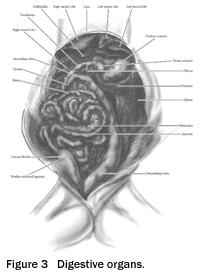My Cart
Your Shopping Cart is currently empty. Use Quick Order or Search to quickly add items to your order!
Compiled by Tammy Sadler
Preserved Materials Department
The Carolina’s Perfect Solution® cat is an excellent dissection specimen for giving students the “inside story,” allowing them to see firsthand how feline anatomy closely parallels human anatomy. Dissection of this large vertebrate using comparative anatomy techniques is an effective stepping stone to teaching human anatomy. Here are hands-on dissection activities that help students understand the cat’s external and internal anatomy and their connection to human anatomy.
As you explore the external structures and internal tissues, organs, and systems of the cat, consider the similarities and differences between humans and cats.
Have your students explore their specimen’s external anatomy using the following procedure:
 |
|
Click on image to enlarge. |
Internal anatomy—exploring the “inside story”
Now your students can begin to explore the internal anatomy of their cat specimen to further study the tissues, organs, and systems. A full dissection would include all of the major systems, including the muscular, digestive, urogenital, circulatory, respiratory, nervous, and skeletal systems.
Here are activities relating to the digestive and respiratory systems that you may choose to perform during your next cat dissection.
 |
| Click on image to enlarge. |

|
| Click on image to enlarge. |

|
| Click on image to enlarge. |
After each system has been properly dissected, spend time with your students identifying major organs and discussing structure and function. You may also choose to discuss the similarities between cats and humans and highlight such things as the arrangement of organs in the body cavity, the 4-chambered mammalian heart, or the similarities in musculature.
Two of our most popular cat anatomy dissection kits are excellent resources for examining and studying all the systems in the cat. The Cat Dissection BioKit® helps students understand basic feline anatomy and physiology through guided dissection. It includes 15 plain Carolina’s Perfect Solution® cats, storage bags, and detailed lab manuals. The AP® Biology Mammalian Structure and Function Dissection Kit provides a comprehensive survey of tissues, organs, and organ systems. It also includes 15 plain Carolina’s Perfect Solution® cats, storage bags, and detailed lab manuals. An added bonus is the set of 25 slides representing major tissue types.
To learn more about our extensive selection of dissection kits for the classroom and Carolina’s Perfect Solution® specimens, visit www.carolina.com/preserved, where you can also find secure online shopping, product information, classroom resources, activities, and additional teaching tips.